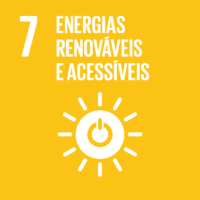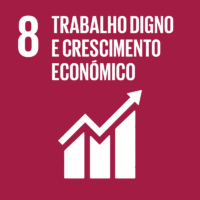As energias renováveis (ER) geram valor a partir das inovações tecnológicas que permitem aumentar a eficiência, diminuir os custos de investimentos, favorecendo a redução da conta final de energia e a dependência energética. Além disso, geram outros benefícios sociais e económicos, geralmente não adequadamente avaliados. A política nacional de energia precisa de avaliá-los para os moldar, possibilitando benefícios ambientais, maximizando os seus papéis sociais locais com base no desenvolvimento, produção, instalação e manutenção de tecnologias de ER, aumentando o acesso à energia, reduzindo custos de energia e conflitos de recursos, permitindo melhorar a qualidade ambiental. Esta investigação avalia o impacto de novos investimentos em capacidade de geração de eletricidade solar e eólica na emissão de gases de efeito estufa (GEE) e outros gases tóxicos nocivos, como o SO2 ou NOx, para a Região Centro de Portugal. O principal contributo é uma avaliação de impacto global, não apenas da perspetiva tradicional do planeamento da geração de energia, mas também considerando custos e benefícios dos aspetos económicos e sociais das externalidades presentes mais relevantes.
A primeira fase do projeto avalia o impacto de novos investimentos em capacidade de geração de energia solar e eólica nos GEE e outras emissões nocivas na Região Centro de Portugal, usando um modelo de planeamento centralizado a ser desenvolvido, com base nos custos de operação e investimento das unidades de geração. Serão considerados os recentes objetivos do Plano Nacional Português de Energia e Clima (PNEC). Esta região foi escolhida devido à sua relevância no setor energético nacional e ao seu potencial de contribuição positiva para os compromissos de eficiência energética e ER da Europa. Nomeadamente, 70% de seu consumo final de eletricidade é baseado em geração renovável, enquanto a média nacional é de 59,1%.
A segunda fase avalia os efeitos locais das suas externalidades mais relevantes, como a redução de emissões, os preços de eletricidade, a dependência de energia, a criação de novos modelos de negócios (como comunidades de ER), a criação de emprego entre outros. Os impactos negativos (por exemplo, poluição visual) também vão ser considerados. Quando aplicável, vão ser usados critérios económicos padrão para realizar essa avaliação. Caso contrário, para impactos mais intangíveis, serão utilizados os conceitos de disposição para pagar (WTP) e disponibilidade a aceitar (WTA), obtidos através da conceção e realização de inquéritos, baseados na teoria de avaliação de contingência.
Embora o tipo de análise da primeira fase não seja particularmente exigente em termos metodológicos, haverá um claro desafio e contributo na recolha de dados e na sua particularização às especificidades da Região Centro. São necessários perfis horários, uma vez que a geração eólica e solar não são tecnologias despacháveis, com perfis de geração muito diferentes, e o seu impacto na substituição da geração convencional é significativamente diferente, o que só pode ser devidamente abordado com modelos de resolução horária. Na verdade, a geração eólica geralmente apresenta perfis de geração mais constantes, enquanto a geração solar concentra-se nas horas do dia e correlaciona-se muito melhor com a procura. Além disso, a geração de energia renovável tem fatores de capacidade muito inferiores aos das tecnologias de geração convencionais, implicando um aumento de capacidade de energia renovável muito maior do que as centrais térmicas desativadas.
Com base nos relatórios existentes e nos planos estratégicos energéticos da UE para os próximos anos (PNEC), vários cenários de evolução serão concebidos para ter em conta as diferentes evoluções da procura, incluindo o impacto da COVID, o impacto da crescente eletrificação do consumo de energia do país, ou a estimativa de eficiências futuras esperadas, entre outros. Diferentes níveis de penetração de ER, custos de combustível e necessidades de reservas de sistemas também serão considerados para explicar a incerteza de tal tipo de análise. O foco estará na avaliação da substituição da geração térmica pela geração renovável para a Região Centro. Para tal, o modelo do Mercado Ibérico de Eletricidade da CEVESA será calibrado e adaptado para determinar o mix de produtos e por tecnologia, emissões, custos e preços de eletricidade para cada cenário. Isto fornecerá o custo total final de cada cenário na perspetiva do sistema energético tradicional, incluindo a relação entre os custos de investimento na geração eólica e solar e as correspondentes reduções de emissões, a redução de custos no mix de produção e no mercado de emissões de carbono, etc. Esses dados serão inseridos na segunda fase.
A avaliação das externalidades, na segunda fase, será combinada com os resultados da primeira fase para calcular uma análise custo-benefício (ACB) mais precisa de investimentos adicionais na geração eólica e solar. Embora o foco esteja na Região Centro, a metodologia desenvolvida e muitos dos resultados serão potencialmente extrapolados para o nível nacional. Na verdade, decisões informadas baseadas numa ACB abrangente são essenciais para este complexo processo de decisão. Neste sentido, os resultados do projeto ajudarão tanto os decisores políticos regionais como nacionais a conceber ou afinar as suas políticas de ER. Os ajustes de instrumentos como incentivos, mecanismos de remuneração de capacidade, leilões de ER, serão apoiados pelos benefícios líquidos globais avaliados de ER, considerando as perspetivas sociais, ambientais e de saúde (questões de independência energética de combustíveis fósseis, impacto ambiental, poluentes nocivos, objetivos dos ODS, bem-estar social e saúde das famílias da região) e os objetivos de descarbonização da NPEC.
Este projeto propõe uma análise custo-benefício (ACB) aprofundada, numa perspetiva social, da instalação de nova capacidade de produção de eletricidade eólica e solar na Região Centro de Portugal. Contribui para o estado da arte ao realizar uma nova ACB numa região de Portugal pouco estudada mas muito relevante, com uma grande quota de geração renovável (GR) e geração térmica.
A CBA combina um impacto de despacho de geração sob a penetração de nova geração eólica e solar, com uma análise detalhada das externalidades e sua avaliação.
O projeto está estruturado em duas fases.
A primeira fase consiste na análise do impacto de investimentos adicionais na capacidade de produção solar e eólica nas emissões de gases GEE, SO2 e NOx na Região Centro de Portugal. Serão recolhidos vários conjuntos de dados relevantes: unidades de produção existentes nas Regiões Nacional e Centro (OMIE), capacidade máxima de produção (OMIE), rampas, potência mínima estável, emissões específicas de gases de saída (JCR-PPDB), combustíveis e custos de emissões (relatórios Aleasoft), custos de investimento em novas tecnologias (relatórios Lazard), repotenciação de parques eólicos (relatórios IRENA e NREL), expansão potencial de microgeração (planos estratégicos NECP), perfis de produção horária de geração eólica e solar (REN DB).
A segunda fase é a análise das externalidades e a sua avaliação económica para complementar os resultados da primeira fase, para obter uma avaliação económica mais abrangente e realista dos novos investimentos em capacidade renovável na perspetiva do ótimo social. Para tal, será realizada uma análise abrangente das externalidades associadas aos novos investimentos em geração de capacidade eólica ou solar, incluindo, entre outros, benefícios ambientais (como benefícios para a saúde) ou custos (como impacto visual, ruído e impacto negativo), nos ecossistemas, etc.) e impactos no mercado de trabalho (como o emprego). Em seguida, a avaliação económica das externalidades identificadas será realizada com base numa revisão abrangente da literatura e dos relatórios, e na experiência da equipa do projeto. Para as externalidades sem metodologia de avaliação existente ou sistemática, serão concebidos inquéritos para quantificar os seus custos ou benefícios com base na metodologia WTP e WTA, utilizando métodos de preferência declarada, como o Método de Avaliação Contingente e as Experiências de Escolha Discreta para determinar o valor das externalidades. relacionados a cada fonte de energia. A análise poderá ser alargada à aplicação de métodos de preferências reveladas para estimar o valor associado às externalidades que não podem ser quantificadas através de métodos de preferências declaradas e/ou para complementar as já quantificadas, com estimativas obtidas por métodos alternativos, aumentando desta forma a robustez das os resultados.
Nesta fase, serão recolhidos dados primários, principalmente para as externalidades cuja avaliação quantitativa é complexa, sendo provavelmente preferida uma avaliação qualitativa alternativa baseada nos conceitos de disponibilidade para pagar e disponibilidade para aceitar. Entre as externalidades mais importantes apontadas na literatura que esta equipa pretende estimar estão: (i) externalidades socioeconómicas positivas e (ii) externalidades ambientais.
Este projeto propõe uma análise custo-benefício (ACB) aprofundada, numa perspetiva social, da instalação de nova capacidade de produção de eletricidade eólica e solar na Região Centro de Portugal. Contribui para o estado da arte ao realizar uma nova ACB numa região de Portugal pouco estudada, mas muito relevante, com uma grande quota de geração renovável (GR) e geração térmica. A ACB combina o impacto do despacho de produção no âmbito da penetração de nova geração eólica e solar, com uma análise detalhada das externalidades e da sua avaliação na Região Centro.
Em suma, este projeto contribui para o estado da arte existente ao:
1) Realizar uma nova ACB sobre a pouco estudada, mas relevante região Centro, com uma grande quota de geração renovável e térmica;
2) Considerar outras emissões prejudiciais das centrais, como SO2 e NOx, além de CO2. Não foram encontradas obras considerando as emissões evitadas e os novos custos de investimento da GR;
3) Examinar os custos e benefícios da GR numa perspetiva social, identificando e contabilizando as principais externalidades, trabalho que ainda não foi realizado segundo o nosso conhecimento;
4) Efetuar uma avaliação completa da sustentabilidade, incluindo impactos ambientais, sociais e de saúde;
5) Aplicar modelos de avaliação contingente, raramente aplicados em CBA, numa perspetiva social, para instalação de RG adicionais.
Avaliação dos impactos ambientais, sociais e de saúde associados aos investimentos na produção de eletricidade eólica e solar na Região Centro de Portugal Continental. De entre esses impactos destacam-se a obtenção de receitas locais provenientes de contratos de arrendamento de terras atribuídas diretamente a parques eólicos e fotovoltaicos; criação de empregos para operação e manutenção de parques eólicos e fotovoltaicos; geração de energia elétrica a partir de fonte renovável de energia, sem emissão de poluentes; maior acessibilidade; fonte de interesse didático e turístico, possibilitando receitas adicionais para a economia local; maior independência energética regional e nacional e diversificação e segurança do abastecimento energético; outros benefícios sociais.
| Centro de Investigação | Grupo de Investigação | Papel no Projeto | Data de Início | Data de Fim |
|---|---|---|---|---|
| BRU-Iscte | Grupo de Economia | Parceiro | 2022-01-03 | 2024-12-31 |
| Instituição | País | Papel no Projeto | Data de Início | Data de Fim |
|---|---|---|---|---|
| Universidade de Aveiro (UA ) | Portugal | Líder | 2022-01-03 | 2024-12-31 |
| Nome | Afiliação | Papel no Projeto | Data de Início | Data de Fim |
|---|---|---|---|---|
| Mónica Meireles | Investigadora Associada (BRU-Iscte); | Investigadora | 2022-01-03 | 2024-12-31 |
| Código/Referência | DOI do Financiamento | Tipo de Financiamento | Programa de Financiamento | Valor Financiado (Global) | Valor Financiado (Local) | Data de Início | Data de Fim |
|---|---|---|---|---|---|---|---|
| PTDC/EGE-ECO/2621/2021 | -- | Contrato | FCT - PTDC | 238136 | 0 | 2022-01-03 | 2024-12-31 |
Não foram encontrados registos.
Não foram encontrados registos.
Não foram encontrados registos.
Não foram encontrados registos.
Não foram encontrados registos.
Com o objetivo de aumentar a investigação direcionada para o cumprimento dos Objetivos do Desenvolvimento Sustentável para 2030 das Nações Unidas, é disponibilizada no Ciência_Iscte a possibilidade de associação, quando aplicável, dos projetos científicos aos Objetivos do Desenvolvimento Sustentável. Estes são os Objetivos do Desenvolvimento Sustentável identificados para este projeto. Para uma informação detalhada dos Objetivos do Desenvolvimento Sustentável, clique aqui.

 English
English




